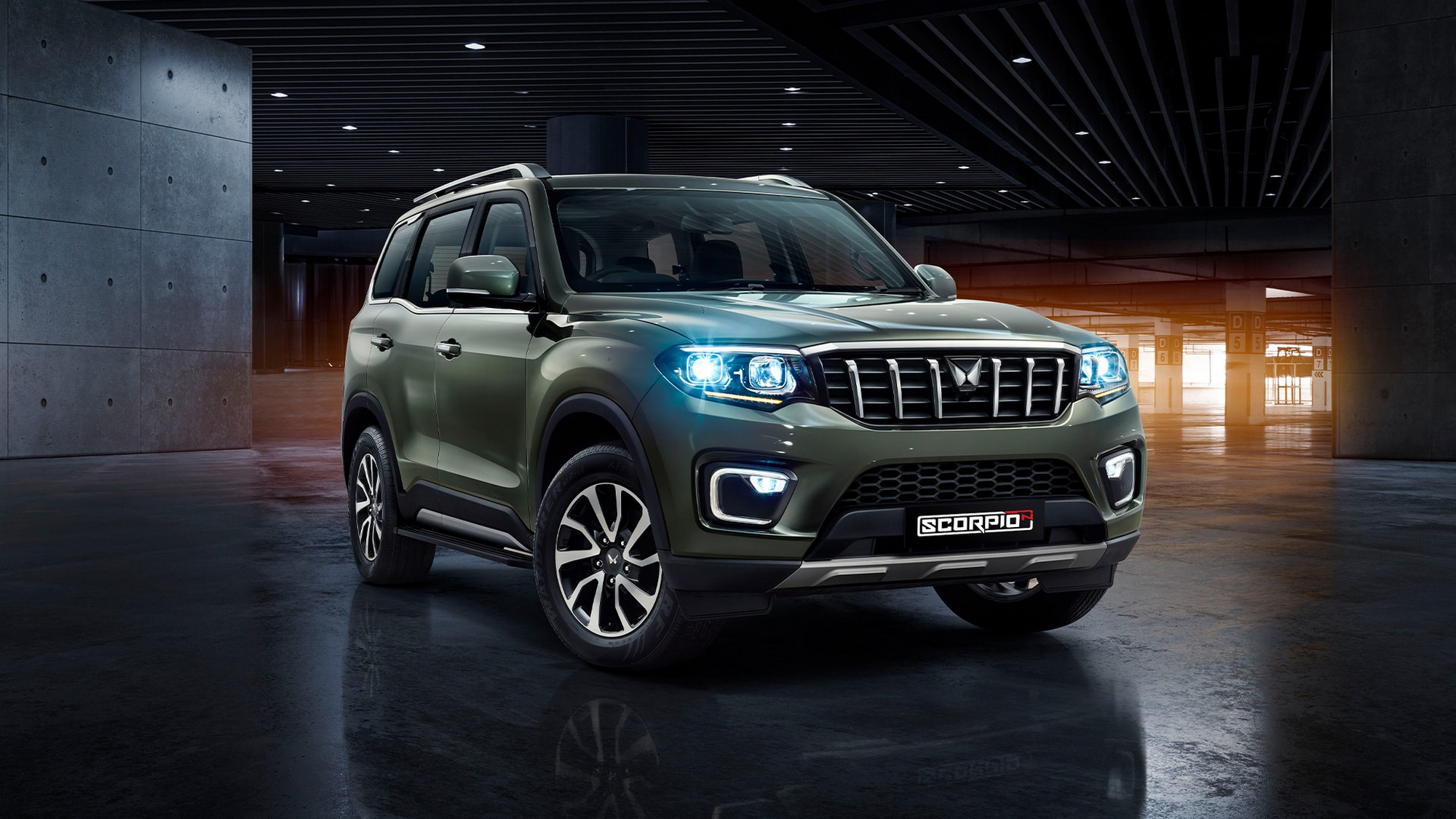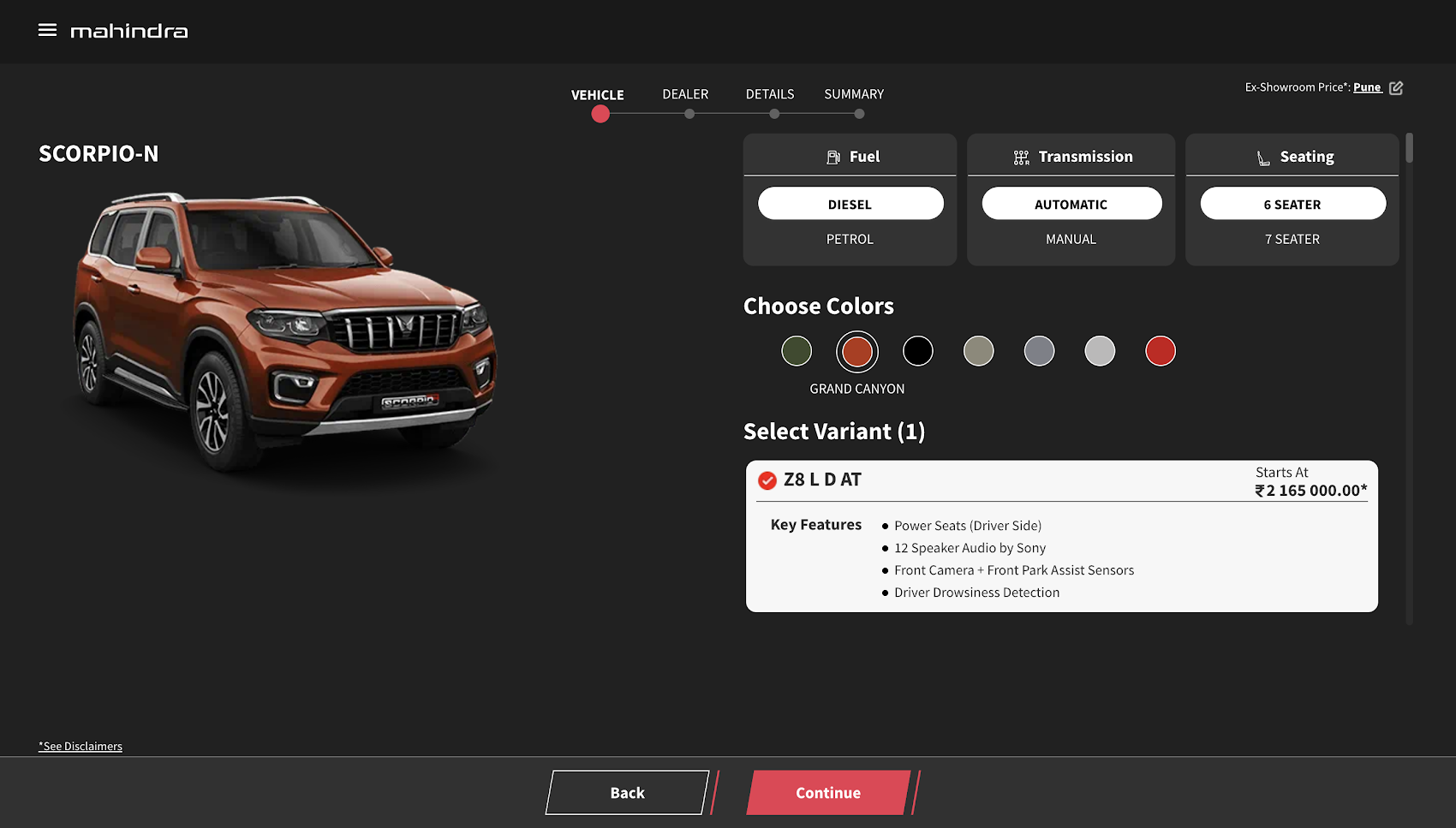How India's top SUV maker reimagined the buying experience for record online sales

Bhuwan Lodha
Senior VP, Chief Digital Officer - Automotive, Mahindra Group
Mahindra Group uses cloud to handle huge spike in online sales; 100,000 orders in half an hour
India is among the fastest growing car markets in the world, and now ranks fourth just behind Japan and ahead of Germany. And like those automotive superpowers, India also boasts a strong family of homegrown automakers that cater to local tastes and preferences. Also like these markets, those tastes evolve over time — smaller cars or three-wheelers for city dwellers, bigger trucks when gas is cheap, and so on.
Lately, the subcontinent might be better known as the SUV-continent, given massive interest in the segment.
That’s a big reason that Mahindra Group's Automotive Division, a major player in the passenger vehicle business in India, made the decision last year to focus solely on SUV production for our passenger vehicles. We are currently building a robust portfolio across all SUV categories, and launched two new models in the last two years.
With this momentous opportunity to pivot our business also came the opportunity to pivot our sales, as well.
As in most markets, the automotive industry in India is largely dealer-driven. Indian customers primarily depend on their dealership's contact to provide all the details and visibility on the purchase and delivery of their vehicle. The Mahindra team set ambitious goals with our SUV business to improve end-to-end customer experiences. We wanted to bring design thinking and customer-centricity to the forefront of our sales and service offerings, with the goal of enhancing the vehicle buying process and providing greater visibility into vehicle delivery.
The latest Scorpio-N SUV launch offered a signature moment to build a completely new booking channel for the vehicle — and proved to be a tremendous success. The new bookings platform broke multiple records during the launch day, with 25,000 booking requests in the first minute, and 100,000 booking requests in the first 30 minutes, totaling USD 2.3 billion in vehicle sales.

At its peak on launch day, July 30, 2022, there were around 60,000 concurrent users trying to book the vehicle. It’s not the kind of traffic an automotive website is accustomed to seeing, to say the least (and we don’t mean traffic congestion).
Were it not for the robust and scalable platform we had built on the cloud to handle this e-commerce-level rush, our big launch moment could easily have crashed and burned. Here we’ll share more about our historic journey from the factory and design studio to the cloud, dealerships, and ultimately our customers’ driveways.
A modern buying experience for a modern vehicle
The Scorpio has become one of the most iconic models and is ubiquitous across the country. When the time came to launch the new Scorpio-N, we anticipated huge demand for the SUV. We have learned from our recent launches that a lot of our customers are tech savvy. They want to book the vehicles online and instantly so that they can get prioritized deliveries. With this knowledge, we chose to go fully digital for the debut of Scorpio-N — a first in the SUV sector in India.
With a limited quantity of introductory pricing and a first-come, first-served customer fulfillment strategy, we were well aware of the technical challenge to create an online booking system that could handle the spike in reservations, while still providing customers with a fast, frictionless, and secure experience.
Our aim was to build a clean, lean, and highly efficient system, which was also fast, robust, and scalable. To achieve that, we went back to the drawing board to remove all the inefficiencies in our existing online and dealer booking processes. We started with a design-thinking approach that put equal emphasis on the needs of customers and dealers. The goal was a platform that worked year-round while being particularly suited to handle high rush launches, delivering flawlessly on what mattered during launch day — the ability for all to book a vehicle swiftly and efficiently.
While order-booking use cases are technically simple, our particular challenge was to handle a large volume of orders in a very short time, and ensure almost immediate response times for customers. Each order required a sequence of business logic checks, customer notifications, payment flow, and interaction with our CRM customer relations systems. We knew we needed to build a cloud-first solution that could scale to meet the surge and then rapidly scale down once the rush was over.


We arrived at a list of required resources about three months before the July launch date and planned for resources to be reserved on Google Cloud specifically to support our project. We chose to build the solution on managed platform services, which allowed us to focus on developing our solution logic rather than worrying about day-two concerns such as platform scalability and security.
The core platform stack is comprised of Google Kubernetes Engine (GKE), Cloud Spanner, and MemoryStore (Redis), and is supported by Container Registry, Pub/Sub, Cloud Functions, reCaptcha Enterprise, Google Analytics, and Google Cloud’s operations suite.
Each of these solutions worked in concert to deliver the scalability, reliability, and responsiveness that our big launch demanded. You can read more on how we built this stack on the Google Cloud blog.
To help ensure smooth implementation of our requirements and needs, we worked closely with Niveus Solutions, an award-winning Google Cloud partner based in India. Cross collaboration among Mahindra, Niveus, and Google Cloud teams in terms of development, testing, deployment, and monitoring throughout the project, greatly contributed to the success of the campaign.
From showroom to war room to driveway
Just as has become common on the factory floor, we brought lean principles to our booking site, as well, including only the necessary components and stripping away extraneous features that could have slowed the launch — and our site performance — down. We kept the required fields to: 1) vehicle choice, 2) dealership delivery, 3) customer’s personal details, and 4) payment mode.
Particularly in a country with a nascent internet network, where most web services are delivered to users on their mobile phones, site simplicity and reliability are that much more important.
Within the journey, we worked towards a lean system and ensured all images and other master assets were optimized for size and pushed to Cloudflare CDN, with cache enabled to reduce latency and to reduce server calls.

We also built custom dashboards with Google Cloud to handle site reliability monitoring and analytics. These offered an almost real-time view into site traffic and user intent. We also performed extensive testing ahead of launch to ensure the site would perform as planned. And even then, we built an IT war room so the Mahindra and Google Cloud teams were ready on launch day to monitor site stability and customer experience.
And we certainly needed that attention: At peak, more than 1,200 Kubernetes nodes were operating, handling dozens of microservices to address the needs of our digital shoppers.
Mahindra got its start in the automotive business in 1954, when the company began assembling the Indian version of the CJ3. Arguably, we brought the original SUV to India and have been innovating on the platform ever since, up to our iconic and best-selling Scorpio models. What is so special now is, it’s not just the vehicles that are evolving but the way our customers purchase and utilize them.
With so many more automotive revolutions yet on the horizon — from smart cities and autonomous driving, to electric and fuel-cell vehicles — we at Mahindra are excited to see how we can continue to deliver these future innovations to people to improve not only the driving experience but their daily lives.



